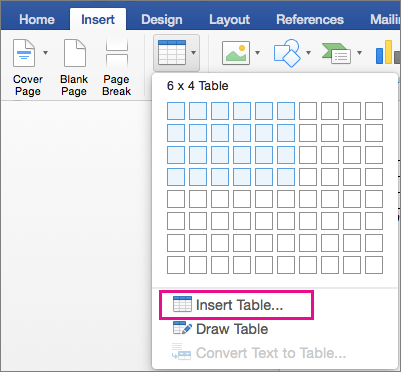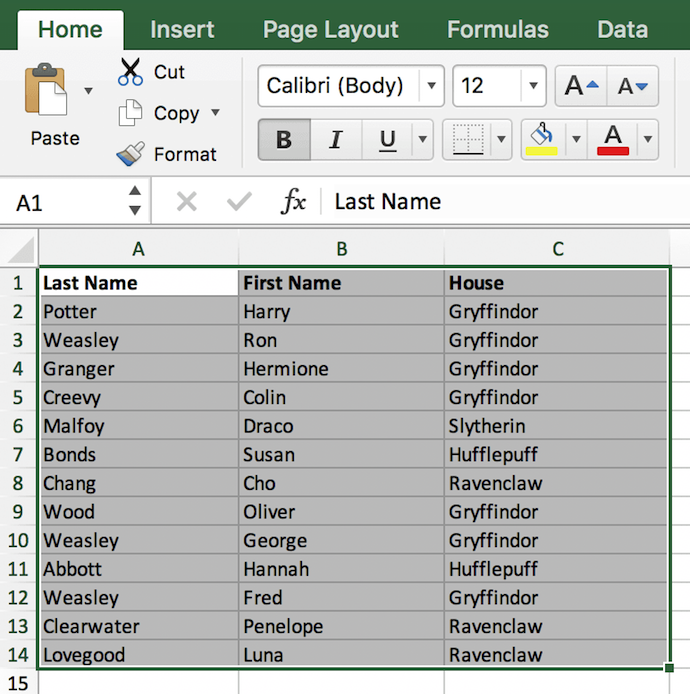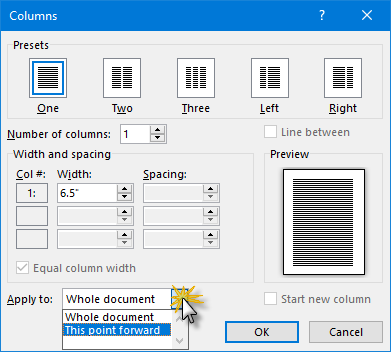

So I downloaded the M1 Chrome and just installed it over the original.īoom! The performance improvement was exceptional. In any case, I googled for a minute and discovered that Chrome had an Apple Silicon build. Don't discount that iMac because it had a top-equipped i7 and bonkers memory, so even seven years later, it's a pretty fast machine. Chrome was more sluggish than I am used to on my old 2013 iMac. I started my morning reading and realized I was a bit disappointed with Chrome performance (not the usual disappointment, but a more noticeable one). I want to go back to the TS3 because I want just one cable going into the laptop for quick and easy removal. So I ordered an Active Display Port to HDMI port adapter (CalDigit says it must be an Active adapter) and temporarily hooked up the machine to the Mini dock. Oh, and the mini dock worked because the Thunderbolt 3 cable was part of the dock itself. The only gotcha? It doesn't support HDMI, just DisplayPort.
MOVE HIGHLIGHTED COLUMN TO FIRST COLUMN FOR MAC 2011 PLUS
When I replaced it with the TS3's provided cable, the TS3 Plus dock worked. It did not provide power, so my measly two Thunderbolt ports were used up between the power cable and the dock.īut why didn't the TS3 work? As it turns out, the Apple-provided Thunderbolt cable wasn't a Thunderbolt cable. That provided one USB 2.0 port, one USB 3.0 port, two HDMI ports, and an Ethernet port. But when I hooked up the CalDigit Mini Dock, everything worked perfectly. But we're here to help.Īfter the migration completed, I still found I couldn't get the CalDigit TS3 Plus to work other than to provide power to the Air. The best Mac: Which iMac, MacBook, or Mac Mini is right for you?Īpple's Mac lineup can be confusing as the company continues to transition from Intel processors to its own Apple Silicon processors. Also, I wasn't entirely sure how the M1 would work for my projects because I'd been running Intel Macs for so very long. I've been putting off upgrading these machines because it's a hefty expense. I've learned my lesson with that the hard way. At that point, applications and even web services start to fail, and they often fail at unpredictable times. Certainly, I wouldn't say I like to fall two generations behind. I generally like to run my production Macs about half an OS generation behind, just because it usually takes half a year or so until the growing pains of the new release are overcome with bug fix updates. Both are able to run current software, so I'm sticking with them (although the laptop is going to my wife) for as long as they're supported. I also have a very powerful 2018 i7 Mac mini, which is my main desktop video editing machine and a 2015 i5 laptop. Some can run Catalina, one is stuck back at Mojave, but none can run either Big Sur or the upcoming Monterey. I have a 2013 iMac, three 2012 Mac minis, and a 2011 Mac mini. I have a bunch of very reliable, very functional, very old Macs. Now you should be able to add columns and rows to you heart's content.OK, let me set the stage. To allow you to insert rows and columns, you'll need to save your spreadsheet and, in true Microsoft style, close it and open it up again.

I adore its use of the "off of" artificial construct. Select another location in which to insert new cells, or delete data from the end of your worksheet. To prevent possible loss of data, Excel cannot shift nonblank cells off of the worksheet. When you try, it will give you the following error:

Sometimes you'll encounter a spreadsheet that doesn't allow you to insert a new column.


 0 kommentar(er)
0 kommentar(er)
